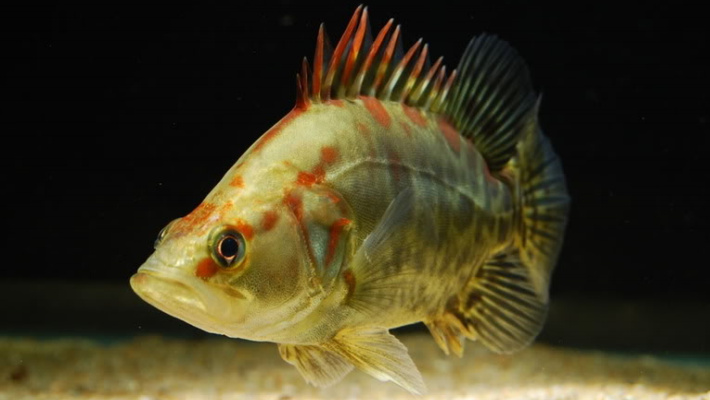|
Brightly
colored males of freshwater fish are forced to find trade-offs between
conspicuousness for sexual mates and cripticity for potential predators.
Divergence in spectral sensitivity of prey and predators is one of the possible
ways to solve this problem in its evolutionary development.
The maximums
of spectral sensitivity in threespined stickleback, Gasterosteus aculeatus (605 nm: Rowe et al., 2004), as prey, and perch, Perca fluviatilis (635 nm: Protasov, 1968), as natural predators,
are strongly distanced. It means that for P.
fluviatilis, as specialized observers in the longwave part of the spectrum,
bright red breast and blue iris of G.
aculeatus (Rowe et al., 2004) must look darker (that is cryptic) than for
the owners of these colors. Similarly, the maximums of spectral sensitivity in
pumpkinseed sunfish, Lepomis gibbosus
(612 nm: Tamura & Niwa, 1967), as prey, and largemouth bass, Micropterus salmoides (673 nm: Kawamura
& Kishimoto, 2002), as natural predators, are distanced even more. So, for M. salmoides, with fine color vision in
the far red part of the spectrum,
conspicuous red iris and opercular flaps, all-important for breeding sunfish (Stacey & Chiszar, 1978), must be
dimmer than for the sunfish exploited these signals.
Another way
is the divergence of spectral sensitivity in the shortwave part of the
spectrum.
Vision in
the ultraviolet (UV) part
of the spectrum (with the maximum of spectral sensitivity near 365 nm) affects female
mate choice in threespined sticklebacks, G.
aculeatus (Rick et. al., 2004; Boulcott et al., 2005; Rick et al., 2006). According to Leech & Johnsen
(2009), however, ability to see in the UV region (with the maximum near 385 nm)
occurs only in planktivorous individuals of Perca
flavescence (or P. fluviatilis)
disappearing in adult predatory fish.
Basic References
Boulcott P.D., Walton K., Braithwaite V.A. 2005. The role of
ultraviolet wavelengths in the mate-choice decisions of female three-spined sticklebacks.
Journal of Experimental Biology 208,
1453-1458
Kawamura
G., Kishimoto T. 2002. Color vision, accomodation and visual acuity in the
largemouth bass. Fisheries Science
68, 1041-1046
Leech D.M., Johnsen S.
2009. Light, Biological Receptors. Encyclopedia of Inland Waters. (Gene E.
Likens, Editor), Oxford,
Elsevier. Volume 2, 671-681
Protasov
V.R., 1968. Vision and near orientation in fish. Israel
program for scientific translations, Jerusalem
Rick I.P.,
Modarressie R., Bakker T.C.M. 2004. Male three-spined sticklebacks reflect in ultraviolet light. Behaviour 141, 1531-1541
Rick I.P.,
Modarressie R., Bakker T.C.M. 2006. UV wavelengths affect female mate choice in
three-spined sticklebacks. Animal
Behaviour 71, 307–313
Rowe M.P.,
Baube C.L., Loew E.R., Phillips J.B. 2004. Optimal mechanisms fo finding and
selecting mates: how threespine stickleback (Gaserosteus aculeatus) should incode male throat colors. Journal of Comparative Physiology A190,
241-256
Stacey
P.B., Chiszar D. 1978. Body color pattern and the aggressive behavior of male
pumpkinseed sunfish (Lepomis gibbosus)
during the reproductive season. Behavior
64, 271-297
Tamura T.,
Niwa H. 1967. Spectral sensitivity and color vision of fish as indicated by
S-potential. Comparative Biochemistry
& Physiology 22, 745-754
|








 SUBSCRIBE
SUBSCRIBE


